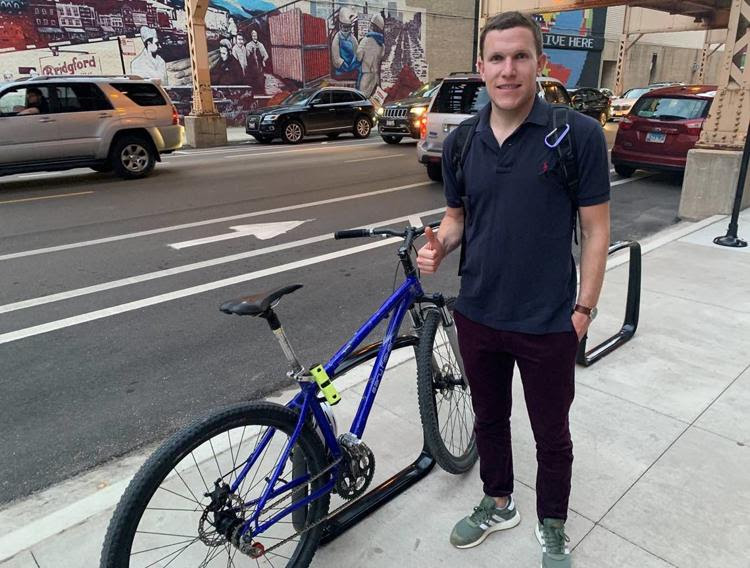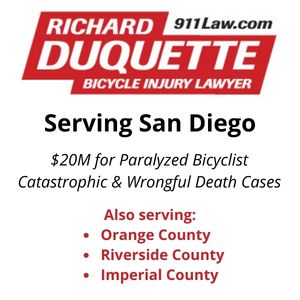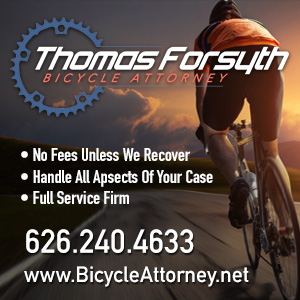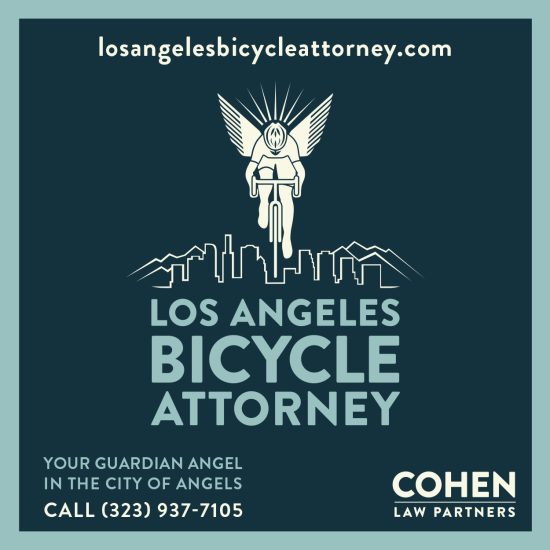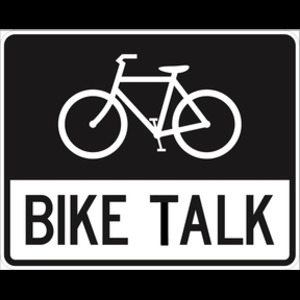
Meet the new boss. Same as the old boss.
Evidently, not much has changed with a new, more progressive governor in Sacramento.
Former Governor Jerry Brown became famous for obstructing bicycle safety bills, to the point that “Jerry Brown” became a pseudonym for a dangerously close pass after Brown vetoed two versions of a three-foot passing law before finally agreeing to the watered-down version we have today.
And yes, I may have had something to do with popularizing that term.
Yesterday, Brown’s understudy, Governor Gavin Newsom, followed in his footsteps by vetoing SB127, the California Complete Streets bill.
The bill would have simply codified what Caltrans has already promised to do — include Complete Streets provisions whenever a roadway under state control is resurfaced or receives a major makeover.
Which is the primary reason Newsom gave for vetoing it.
But anyone who’s followed Caltrans for any length of time knows they’re notorious for promising change, then continuing with the same deadly, auto-centric policies.
Newsom’s veto message says Caltrans is already committed to Compete Streets “where reasonable and feasible.”
Which is simply another of saying if it gets hard in anyway, or anyone complains, just forget it.
And we’re left with a few minor changes to add sidewalks or bike lanes here and there — the “low hanging fruit,” as LADOT described it.
Newsom also cited Caltrans’ brazen, and successful, attempt to sabotage the bill, despite their many pledges of support for Complete Streets. The agency cited an absurdly high projected cost for the measure, claiming it would cost the state an extra $1 billion a year.
Which works out to $4.5 million per mile of blacktop. Even though the average cost of installing painted bike lanes is less that $50,000 per mile.
Usually a lot less.
Meanwhile, the average cost of building sidewalks is just $5.20 per square foot. So a full mile of concrete sidewalk five feet wide works out to $137,280.
Add that to the bike lanes, and double it for both sides of the street, and you’re looking at less that $375,000 per mile.
Just a tad less than that $4.5 million.
Maybe they were planning on some very expensive crosswalks, and a shitload of Share The Road signs.
Or maybe they just didn’t want to finally be held to account.
So once again, people who choose not to drive, for any length of time and for any reason, are left holding the bag.
Along with the communities these roads pass through. And the earth they’re built on.
And once again, we’re left with a self-proclaimed climate governor, like LA’s ineffectual climate mayor, who’s willing to do whatever it takes to protect the environment and fight climate change.
As long as that doesn’t mean inconveniencing drivers in any way.
………
Yet another bike rider is barely clinging to life, thanks to yet another heartless coward behind the wheel.
KTLA-5 is reporting that a man was struck by a driver while riding his bicycle at Main Street and Warner Ave in Santa Ana early yesterday morning.
The driver fled the scene, leaving his or her victim lying in the street in “extremely grave condition” with a head injury.
No description was available for either the driver or the suspect vehicle. Although police somehow concluded that alcohol was believed to have played a role in the crash, but did not explain how.
Anyone with information is urged to call the Santa Ana Police Department’s Collision Investigation Unit at 714/245-8208.
It sounds like prayers or good thoughts for the victim are definitely in order.
………
Sad news from Mexico, where longtime pro mountain biker Jordie Lunn was killed while trail riding with friends.
If the name doesn’t mean anything to you, this spectacular stunt from his self produced video series probably will.
The 36-year old British Columbia native was riding a trail in Cabo San Lucas when he fell, suffering a fatal head injury.
He started racing BMX at 11 before switching to mountain bikes at 15, rising to become the second-ranked North American rider in the 2003 World Cup standings.
He also became the first rider to land a Cork 720 a few years later. Even if he misses it here.
………
It’s Firefly season again.
We're re-launching #OperationFirefly on Wednesday November 6. This winter, we're doing 1 event per week (Nov-Mar). You can help us give out bike lights and safety information. Please sign up to be a #TeamFirefly volunteer: https://t.co/sR5aDiCoTB Thanks!! #bikeLA pic.twitter.com/CVWxLJxZ4v
— BikeLA (@heybikela) October 11, 2019
………
This may be my new favorite song.
Then again, any song about a stolen bicycle, by a band featuring a woman on a tuba, can’t be all bad.
………
The war on cars may be a myth, but the war on bikes just keeps on going.
A San Francisco police officer is accused of lying under oath about beating the crap out of a bike rider, for the crime of riding a bike on the sidewalk.
After a close pass, a London driver tells a bike rider he “should have used the fucking bike lane.”
Sometimes the problem is just bald-faced bigotry directed to someone made more vulnerable by being on a bike. A British man intervened when a handful of teenagers surrounded a Jewish man, shouting anti-semitic slurs and threatening to take his bicycle. Seriously, what the hell is wrong with some people?
But sometimes, it’s the people on two wheels behaving badly.
A Phoenix man faces charges for allegedly pulling a gun out of his waistband and shooting another man he accused of disrespecting him as he rode past on his bicycle; his bullet passed through the victim, and nearly struck a couple in the living room of their nearby home. Fortunately, the man he shot is expected to survive.
………
Local
A Burbank photographer recently completed his 17th ride down the California coast with the Arthritis Foundation’s California Coast Classic Bike Tour.
A man was fatally stabbed in South El Monte Friday evening after three men got out of a passing car, knocked him off his bike, and repeatedly stabbed him; the victim tried to get back on his bike and ride for help, but only made it another block.
State
Former motocross champ Mickey Diamond is in the ICU ward of an undisclosed Orange County hospital with a subdural brain bleed after apparently catching a knee on the handlebars of his time trial bicycle.
Over 10,000 people turned out for the 7th annual Open Streets event in Santa Cruz on Sunday.
Uber and Lyft rides could be subject to a small tax if a San Francisco ballot measure passes, with the funds going to public transit and street safety; the proposal got a quick endorsement from Streetsblog SF.
A Marin newspaper attacks a pilot project to put a barrier protected bike lane on the upper span of the Richmond-San Rafael Bridge; the paper says the $20 million cost should have gone to better uses, and the space used to add a third demand-inducing motor vehicle lane across the bridge. However, the $20 million is a little more than half the cost paid to add a third traffic lane on the lower span last year.
National
A national transportation advocacy group calls for zeroing out funding for new roads and highways.
Uber Eats teams with the Governors Highway Safety Association to provide bicycle safety tips for their delivery riders. Which aren’t bad, for a change.
No, Grit Daily. Apple doesn’t make the Lumos Matrix bike helmet; they’re just selling it through the Apple Store.
An op-ed in Bicycle Retailer and Industry News looks back at the failure of the Interbike Trade Show, while expressing hope for something to take its place.
An Anchorage AK cop is facing an assault charge for punching a man outside his home, kicking him in the nuts and pepper spraying him, then taking him into custody on a false resisting arrest charge; the cop had earlier stopped him for riding without lights, then drove to his home with a ticket after the man was abusive, refused to show his ID and simply rode off. Thanks to Eric Grisiwold for the heads-up.
Good idea. Activating the bicycle sensor at a Portland traffic light will trigger a blue signal to let you know you were successful.
Ed Zink, a Durango CO bike shop owner and co-founder of the Iron Horse Bicycle Classic died of a heart attack on Friday; he was 71.
He gets it. A Missouri writer recounts the history of bicycling from the beginning to explain that most bicyclists are utilitarian riders who only need good infrastructure, and fair treatment from law enforcement to protect them from harassment and reckless drivers.
After Tulsa police recovered a disabled woman’s stolen three-wheeled bike in unusable condition, a pair of Good Samaritans gave her another one.
A Queens city official suggests that bike riders need to trade protected bike lanes for a ban on bikes in certain areas — then immediately tries to walk it back.
Things keep getting worse in New York City. A 65-year old man was killed when a driver plowed into his bicycle, after bike lanes were temporally removed for street resurfacing; local residents had been trying to get a red light on the street for years. This is the city’s 25th bicycling fatality, an increase of 250% compared to last year.
The New York Times says, despite predictions, the apocalypse didn’t come when cars were recently banned from a section of New York’s 14th Street.
Life is cheap in New York State, where authorities plea bargained a case of vehicular manslaughter in the drunken hit-and-run death of a bike rider down to a simple hit-and-run injury case; the driver could be out in as little as 18 months. Also good to know that driving at nearly three times the legal limit is just an effing misdemeanor in the Empire State.
The University of Alabama football team has sent a football and jersey signed by star quarterback Tua Tagovailoa to the family of a 12-year old boy who was recently shot and killed by another boy because he wouldn’t give his bicycle; his family plans to have him buried with both.
International
The director of safety policy and advocacy for Bird writes to a Toronto newspaper, arguing that shared e-scooters are as safe as bicycles.
An English bus driver was fined the equivalent of over $750 for passing a bike rider so close the rider could reach out and touch the bus, after the victim was accused of having a vendetta against the company — and told by a cop he should get a hummer, instead.
Just in time for California fire season, a British sports site rates the best bike masks to protect against pollution. They should also come in handy for your next crime spree or DIY urban activism campaign.
Over 10,000 people have been busted for distracted bicycling in the four months since a ban on cellphone use while riding went into effect in the Netherlands.
Haute couture cycling, anyone? Vogue says the best way to visit Italy’s Puglia region is by bicycle.
A Kiwi driver says two bicyclists crashed into his trailer while descending a hill at 30 mph because local officials forced him to remove the convex mirror he’d placed at the entrance to his driveway, which would have allowed him to see around the blind curve.
Competitive Cycling
Good question. A gaming site wants to know if digital dopers should get banned in the real world, too.
Finally…
Think of it as critical mass for zombies. Don’t ride around that tree, just ride through it.
And if you’re going to suffer a life-threatening heart attack, there are worse places than in front of three off-duty doctors participating in a charity ride.





 ………
………